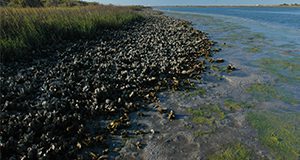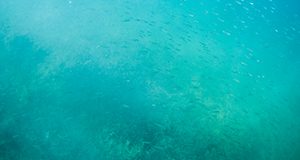This 9-page document is the ninth lesson in the Cetaceans 4th Grade Curriculum. It will help students investigate the roles that blubber, body shape, and body size play in preventing heat loss in marine mammals. Written by Maia Patterson McGuire and Ruth Francis-Floyd, and published by the UF/IFAS Veterinary Medicine–Large Animal Clinical Sciences Department, June 2019.
http://edis.ifas.ufl.edu/vm234
Tag: whales
Cetaceans 4th Grade Curriculum–Lesson 4: How Big Are Cetaceans?
This 12-page document is the fourth lesson in the Cetaceans 4th Grade Curriculum. It will help students gain an understanding of the size of different cetaceans through engaging activities. Written by Maia Patterson McGuire and Ruth Francis-Floyd, and published by the UF/IFAS Veterinary Medicine–Large Animal Clinical Sciences Department, June 2019.
http://edis.ifas.ufl.edu/vm229
Cetaceans 4th Grade Curriculum–Lesson 8: Food Chains
This 6-page document is the eighth lesson in the Cetaceans 4th Grade Curriculum. It will help students identify components of baleen and toothed whale food chains and trace energy flow. Written by Maia Patterson McGuire, Brenda Cannaliato, and Ruth Francis-Floyd, and published by the UF/IFAS Veterinary Medicine–Large Animal Clinical Sciences Department, June 2019.
http://edis.ifas.ufl.edu/vm233
Cetaceans 4th Grade Curriculum–Lesson 3: Researching Individual Whale and Dolphin Species
This 55-page document is the third lesson in the Cetaceans 4th Grade Curriculum. It will help students learn about individual cetacean species through a game. Written by Maia Patterson McGuire and Ruth Francis-Floyd, and published by the UF/IFAS Veterinary Medicine–Large Animal Clinical Sciences Department, June 2019.
http://edis.ifas.ufl.edu/vm228
Cetaceans 4th Grade Curriculum–Lesson 2: Cetaceans–What Makes a Whale a Whale?
This 7-page document is the second lesson in the Cetaceans 4th Grade Curriculum. It will help students learn about general whale and dolphin biology. Written by Ruth Francis-Floyd and Maia Patterson McGuire, and published by the UF/IFAS Veterinary Medicine–Large Animal Clinical Sciences Department, June 2019.
http://edis.ifas.ufl.edu/vm227
Cetaceans 4th Grade Curriculum–Lesson 1: Starting to Learn about Whales
This 14-page document is the first lesson in the Cetaceans 4th Grade Curriculum. It will help students start to learn about whales and practice reading comprehension and writing skills. Written by Maia Patterson McGuire and Ruth Francis-Floyd, and published by the UF/IFAS Veterinary Medicine–Large Animal Clinical Sciences Department, June 2019.
http://edis.ifas.ufl.edu/vm226
Cetaceans 4th Grade Curriculum–Outline
The Cetaceans 4th Grade Curriculum provides a series of individual lessons covering cetacean (whale and dolphin) biology and ecology. The curriculum uses charismatic megafauna to engage students and inspire them to want to learn more. This 3-page document provides a brief overview of the Cetaceans 4th Grade Curriculum. Written by Maia Patterson McGuire and Ruth Francis-Floyd, and published by the UF/IFAS Veterinary Medicine–Large Animal Clinical Sciences Department, June 2019.
http://edis.ifas.ufl.edu/vm225
Cetaceans 4th Grade Curriculum–Lesson 7: How Do Whales Eat?
This 10-page document is the seventh lesson in the Cetaceans 4th Grade Curriculum. It contains information that will help students learn the differences between how baleen and toothed whales feed. Students will also learn how sound waves are used for echolocation. Written by Maia Patterson McGuire and Ruth Francis-Floyd, and published by the UF/IFAS Veterinary Medicine–Large Animal Clinical Sciences Department, June 2019.
http://edis.ifas.ufl.edu/vm232
Cetaceans 4th Grade Curriculum: Lesson 6: Cetacean Behaviors
This 4-page document is the sixth lesson in the Cetaceans 4th Grade Curriculum. It contains information that will help students learn about whale and dolphin behaviors. Written by Ruth Francis-Floyd and Maia Patterson McGuire, and published by the UF/IFAS Veterinary Medicine–Large Animal Clinical Sciences Department, June 2019.
http://edis.ifas.ufl.edu/vm231
Cetaceans 4th Grade Curriculum: Lesson 10: Summarizing What We Know about Cetaceans
This 5-page document is the tenth lesson in the Cetaceans 4th Grade Curriculum. It contains information that will help students learn about different types of poetry and write poems to express what they know about whales and dolphins. Written by Maia Patterson McGuire and Ruth Francis-Floyd, and published by the UF/IFAS Veterinary Medicine–Large Animal Clinical Sciences Department, June 2019.
http://edis.ifas.ufl.edu/vm235
Cetaceans 4th Grade Curriculum: Lesson 5: Scientific Names: Understanding Where Those Funny Words Come from
This 7-page document is the fifth lesson in the Cetaceans 4th Grade Curriculum. It contains information and activities that will help students interpret the scientific names of certain whales and dolphins. Written by Maia Patterson McGuire and Ruth Francis-Floyd, and published by the UF/IFAS Veterinary Medicine–Large Animal Clinical Sciences Department, June 2019.
http://edis.ifas.ufl.edu/vm230



